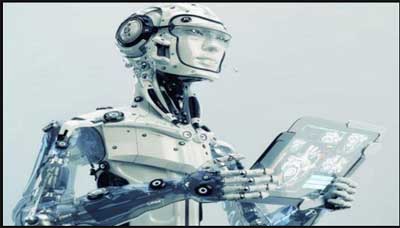- Home
- Editorial
- News
- Practice Guidelines
- Anesthesiology Guidelines
- Cancer Guidelines
- Cardiac Sciences Guidelines
- Critical Care Guidelines
- Dentistry Guidelines
- Dermatology Guidelines
- Diabetes and Endo Guidelines
- Diagnostics Guidelines
- ENT Guidelines
- Featured Practice Guidelines
- Gastroenterology Guidelines
- Geriatrics Guidelines
- Medicine Guidelines
- Nephrology Guidelines
- Neurosciences Guidelines
- Obs and Gynae Guidelines
- Ophthalmology Guidelines
- Orthopaedics Guidelines
- Paediatrics Guidelines
- Psychiatry Guidelines
- Pulmonology Guidelines
- Radiology Guidelines
- Surgery Guidelines
- Urology Guidelines
Robotic device may help restore movement in stroke patients

Seoul, : Scientists have developed a new robotic tool that can help restore movement in paralysed patients, such as those who have survived stroke.
The rehabilitation robotic system, developed at Ulsan National Institute of Science and Technology (UNIST) in South Korea, measures the 3 degree-of-freedom (DOF) impedance of human forearm and wrist in minutes.
Using the device, called the distal internal model based impedance control (dIMBIC)-based method, the team was able to accurately characterise the 3 DOF forearm and wrist impedance,including inertia, damping, and stiffness, for the first time.
Combined with standard rehabilitation, the robotic-assisted rehabilitation therapy is expected to improve the mobility of stroke patients.
Stroke, known as a leading cause of long-term disability,is a sudden loss of brain function, caused by the interruption of blood flow to the brain or the rupture of a blood vessels in the brain and an estimated 150,000 people die from it, each year.
As a consequence of stroke, stroke survivors are often left with muscle overactivity, including spasticity.
Spasticity is a muscle control disorder that is characterised by tight or stiff muscles and an inability tocontrol those muscles.
It is often manifested by increased stretch reflex activity and mechanical joint resistance.
"The dIMBIC-based method can be used to assist in the quantitative and objective evaluation of neurological disorders, like stroke," said Sang Hoon Kang at UNIST.
"Findings from this study will open a new chapter in robot-assisted rehabilitation in the workplace accident rehabilitation hospitals, as well as in nursing homes and assisted living facilities," he said.
The research team expects that, in the long run, the proposed 3 DOF impedance estimation may promote wrist and forearm motor control studies and complement the diagnosis of the alteration in wrist and forearm resistance post-stroke byproviding objective impedance values including cross-coupled terms.
The study was published in the journal IEEE Transactions on Neural Systems. MHN SARMHN

Disclaimer: This site is primarily intended for healthcare professionals. Any content/information on this website does not replace the advice of medical and/or health professionals and should not be construed as medical/diagnostic advice/endorsement or prescription. Use of this site is subject to our terms of use, privacy policy, advertisement policy. © 2020 Minerva Medical Treatment Pvt Ltd